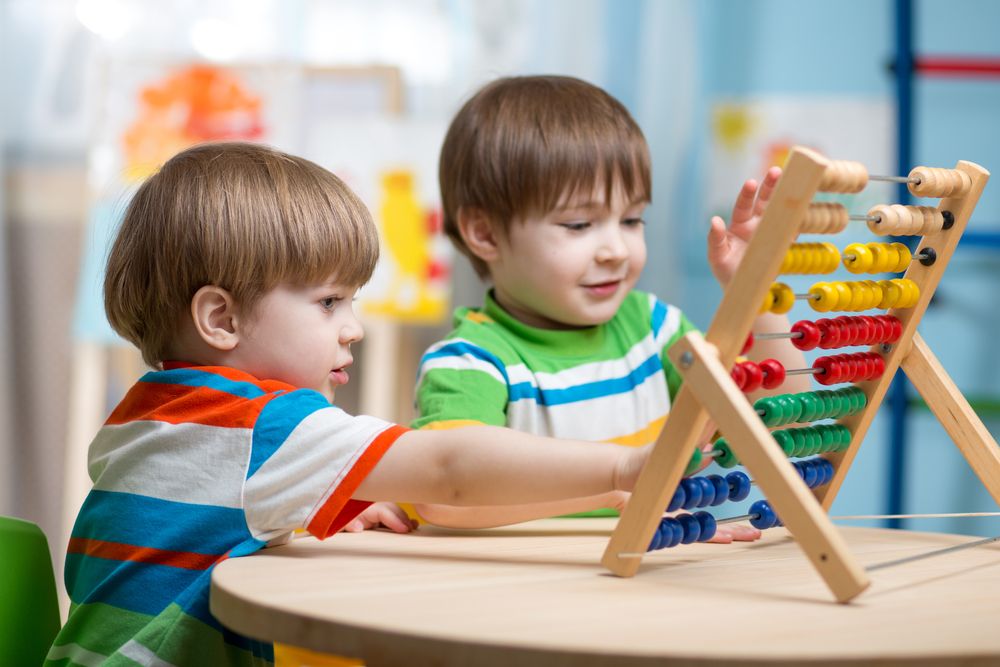The important art of sharing
Published on Tuesday, 16 July 2019
Last updated on Tuesday, 31 December 2019

Sharing is an essential skill for the social, cognitive and emotional development of children. When even the most basic sharing skills are developed in the preschool years, the positive effects on communication and socialisation can extend long into the future.
Early childhood educators are in a good position to encourage the development and practice of sharing and this week we look at the reasons why it's important, and how you can easily promote sharing among the children in your service.
Sharing needs to be learned
According to Nancy Bruski, author of The Insightful Teacher, sharing can be very difficult for young children.
"It is necessary for young children to learn how to cooperate in the use of classroom materials, however sharing often involves giving up what one has so that someone else can have it," she says.
"Children become attached to things they invest themselves in, whether it be toys, materials, ideas for play, or being first in line. Sharing is challenging and something that is learned slowly."
Being possessive is a natural feeling, but it's one that all children need to understand they need to overcome in order to share.
"Some children seem to have an easier time sharing than others, but the child who is more possessive is not being bad or difficult," says Bruski. "Wanting to keep the teacher's attention or to play with the favoured red fire truck is normal on the part of children, and their feelings should be treated as such."
Tips for encouraging sharing
If you're looking for more ways to teach and encourage sharing between children in your service, here are some ideas:
- Sharing 'rules'
Highlight the distinction between home and preschool using a set of classroom 'rules' that are simple and easy to understand. Focus on aspects of sharing like asking for things, taking turns, and helping each other. - Modelling
Encourage children to adopt sharing behaviours by modelling them yourself with other teachers, staff members and parents. Let kids see you engaging in interactions with other adults that revolve around sharing, such as offering food or classroom supplies. - Sharing activities
Learning through action has a big impact. Organise activities and games that require children to share supplies or workload. This could be doing a collective art project, sharing crayons or markers, or cooking together doing different tasks required by the recipe. - Play games that involve sharing
Help guide children through the steps of what it means to share using appropriate language, such as "You share the blue car with me, and I'll share the red car with you." - Timed sharing
To help acknowledge and illustrate the concept that sharing involves taking turns and respecting each other, try setting a timer for use of toys, games and supplies. Children can take turns for equal durations of time and everyone who wants a turn gets to play. In time they will become used to the timer and its purpose. - Positive reinforcement
When you see a child practising a sharing behaviour, acknowledge and praise or reward them immediately. This positive reinforcement will help kids internalise appropriate sharing behaviour while also increasing their self-efficacy. - Point out good sharing in others
By highlighting good sharing in others, it can help children follow their example. This can also extend into books or videos that you might be reading or watching with children. - Talk about sharing
Children should know that sharing is an important part of being in an environment with peers. For example, you could say "When you're playing in a group, you need to share some of your toys," or "Why don't you ask others what they want to play with?"
When children don't share well
While praising children when they practice sharing is most beneficial, sometimes it's helpful to create consequences for not sharing. For example, when children are fighting over a toy, it's completely reasonable to take the toy away for a short period of time.
When establishing consequences of non-sharing actions however, it's important that they relate to what is being shared or not shared so the child learns the correlation to the behaviour they didn't exhibit. After a short while, it's also a good idea to give the child the opportunity to share appropriately so they can rectify their previous behaviour, feel good about themselves and know the correct way to behave going forward.
Thanks to HiMama and Jack Rabbit Care for their information and tips for encouraging sharing in young children.
Related Articles

The Pikler approach to optimal early childhood development
Emmi Pikler's 7 key principles provide a framework for optimal child development in the early years.

Child's play - Three theories you may not know
The interesting theories on child's play that you may not be aware of.

The anti-bias approach in early childhood education
Anti bias education is an approach to teaching designed to increase understanding of differences and their value to a respectful and civil society.
